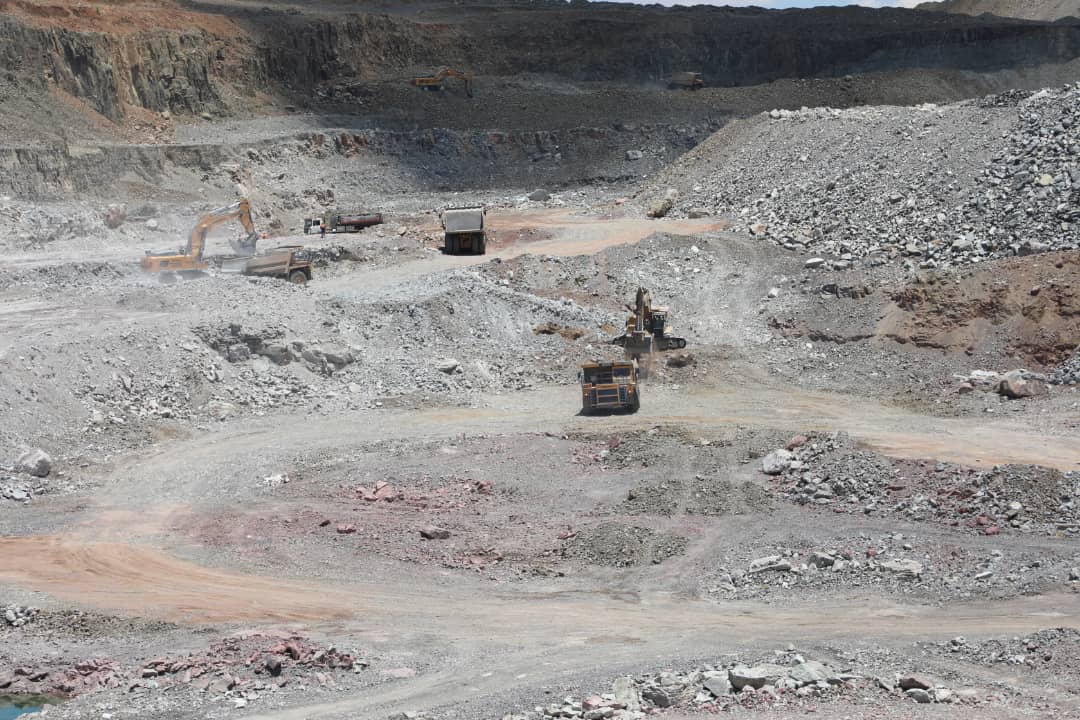The Chiadzwa diamond mining fields in Zimbabwe may contain over 12 million tonnes of diamonds, or roughly 50 million carats of the valuable mineral, according to officials of the Zimbabwe Consolidated Diamond Company (ZCDC), which holds the mineral rights to mine for diamonds in Chimanimani and Chiadzwa, respectively.
The diamond boom in Chiadzwa, Marange District, which occurred in 2006, was said to be the largest in the last 20 years and saw people from all over descend on the diamond fields to mine and trade in alluvial diamonds.
In 2008, the government deployed security forces in Chiadzwa to chase away informal miners, prompting allegations that security forces themselves became involved in diamond panning and trade, forming syndicates to pillage and smuggle diamonds.
Before ZCDC was given mining rights in 2016, the ownership of some of the diamond mining claims in Chiadzwa was contested between the government and some private players.
Despite ZCDC helping the community in Marange, claiming it spends US$60 000 per month for local projects, there are still concerns that the Chiadzwa diamond rush mostly benefits senior Zanu PF officials and those close to them.
The government consolidated the diamond mining sector in 2015 and ZCDC was formed that year and began mining in Marange.
During a tour of Chiadzwa recently, ZCDC Exploration manager, Hope Mvura told journalists that while they do not know the source of the diamonds, there was a massive deposit of the resource.
“The only type of rocks that are responsible for bringing diamonds to the surface are called lamproite or kimberlite but the type of deposit we are mining here in Chiadzwa is alluvial,” he said.
ZCDC is currently mining in the Umkondo Basin, where the diamonds found in Chiadzwa are a result of weathering and transportation from various kimberlite pipes.
“We are not aware of their source but the diamonds were deposited within this Umkondo Basin. I will liken this to an ocean, with different rivers and different streams eroding diamonds from various areas. The source could be continental. Up to now we don’t know the source of the Chiadzwa diamonds,” Mvura said.
“Umkondo Basin stretches all the way from Chiadzwa to Chimanimani, to parts of Chipinge
At the bottom of Umkondo Basin, we have the basement granite and on top of that a layer we refer to as the conglomerate layer that hosts our diamonds. This is a massive deposit and is world class in nature.”
Mvura said the grades of the diamonds were also “out of this world,” noting that diamond grades were quoted as carats per hundred metric tonnes (CPHT).
“We tend to get grades which are above 100 CPHT and for comparison purposes, most kimberlites have grades ranging 80 or so CPHT. This deposit has grades ranging over 1000 CPHT,” he said.
The exploration manager stated they investigated the possibility of underground mining, but due to the type of rock, it is difficult to go underground, so they do “massive” open cast pit mining.
“We have done a lot of explorations, in terms of drilling for these particular units. The deepest part of this conglomerate is sitting at plus or minus 300 metres from the surface and the 5 km which I’ve talked about it is only part of the ZCDC concession which is stuck in north south but there are other areas which we have not even touched and there are areas mined by other companies such as Anjin,”Mvura said.
ZCDC is currently mining 50 metres from the surface and plans to mine another 100 to 200 metres.
“There are a lot of parametres that are involved, stripping ratios, are you making profit when mining from 200 metres from the surface,” said the exploration manager.
There are three main pits that ZCDC is mining from and currently is mining at the Chikwarukwaru pit.
“The other two pits are Shamurai and another is called the RBZ because the grades there are phenomenal, they are very high grades in that section,” Mvura said.
ZCDC Mining Manager in charge of Mine Planning, Tawanda Kadonda, said the role of his department was defining if they could mine everything for profit.
“We consider our cost of mining for the cost per carat. We also consider the grade that they have sampled and also look at the diamond price. We have a strategy to add value because it’s also important in terms of how much we are to utilise our resources so the diamond price is also important,” he said, adding that ZCDC used mine planning software where they input all their cost information, financials and physicals.
“We have defined 12 million tonnes that is 50 million carats – we are going to mine everything using open pit mining. We mine our pits in benches as ways to develop our pits – from the top, we define 10-metre bench heights. The furthest that we are going to mine this pit is 100 metres. We are going to have 10 benches from the top – do a 10-metre cut then step inside a bench belt then go down in terraces like the stadium terraces – which also maintain those terraces – as you can see there are the same terraces – that is the optimisation,” he said.


Please help me for the job